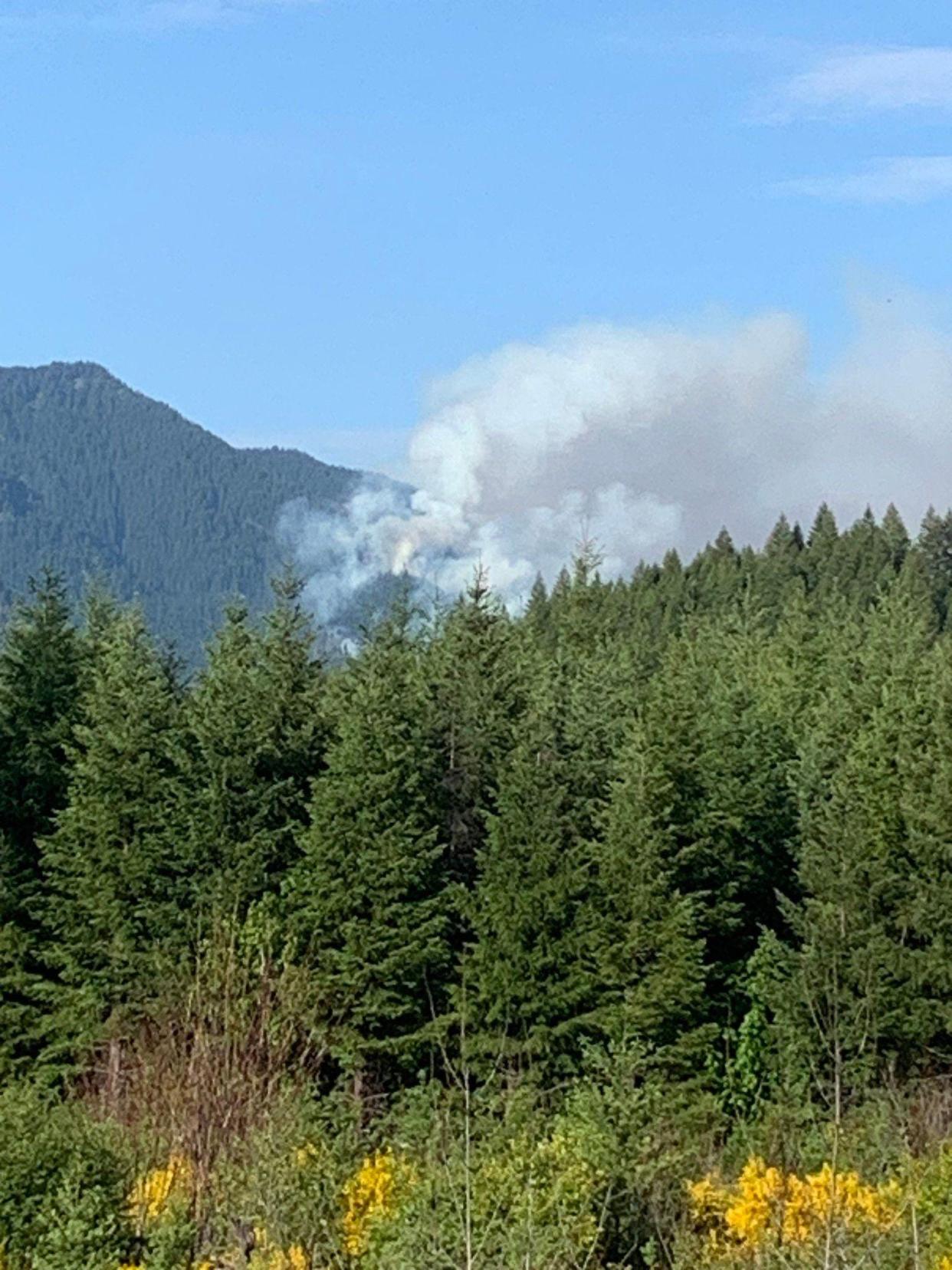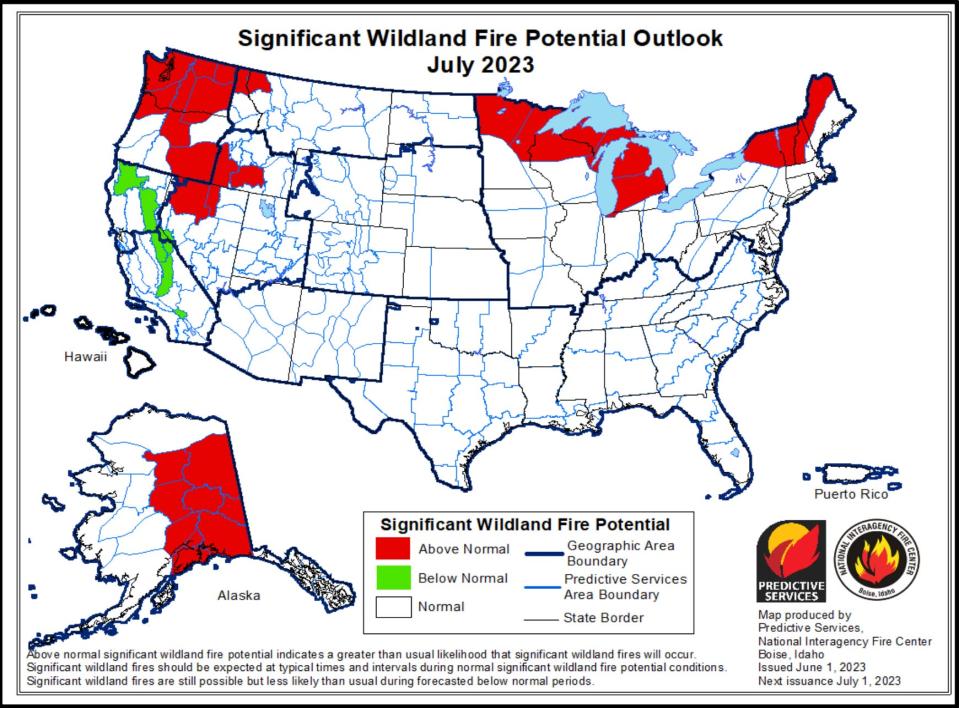Forest Service escaped burn tamped down near Eugene as wildfire risk rises

A wildfire that was ignited by a prescribed burn by the U.S. Forest Service in the McKenzie Bridge area earlier this week is smaller than previously thought and could be winding down. Fire danger in the Pacific Northwest and in Washington in particular appears to be growing, according to the latest forecasts released Thursday.
The W-470 Fire started during what was supposed to be a controlled burn to reduce fuels in the McKenzie Bridge area near Eugene. But high winds caused the fire to escape and turn into an uncontrolled wildfire originally estimated at 120 to 150 acres.
The federal agency said Thursday the total burn size was actually 72 acres — 50 acres of which were part of the original prescribed burn plan. Around 100 firefighters and two hotshot crews were working Friday to build containment line around the fire, according to a report.
"Fire activity on the W-470 Fire diminished due to cooler temperatures and increased relative humidity overnight," the report said. It said minimal smoke was visible Friday morning and smoke was expected to reappear Friday afternoon as temperatures increase.
McKenzie District Ranger Darren Cross said the fire didn't have much of any negative impact on the forest or nearby trails. He said prescribed fire is a critical tool to make communities safe and in this case, the wildfire declaration was made just so they could bring in additional firefighters to corral the fire in the place they wanted it.
"This is an important tool and it's something we're planning to do a lot more of," he said. "A little smoke in the spring is a whole lot better than a lot of smoke in late summer or fall."
Wildfire risk forecast targets Pacific Northwest in latest update
The latest wildfire risk forecast, released Thursday, has put a big red target on the Pacific Northwest. The risk is highest in Washington, where above-normal fire danger is projected in every part of the state by July and stays high through August and September. Washington didn’t get as much snow and precipitation as Oregon but both states are projected to see warm and dry summers, and warming from El Nino could have an impact by late summer or early fall.

The growth of fine fuels in central and southeast Oregon led to above-normal fire fears earlier this year, but the latest outlook also shows northwest Oregon at above-normal risk as well.
More: Oregon wildfire season 2023: What to know as heat, dry conditions expected to return
Most of western Oregon remains at normal risk, including the Cascade Range and mountains of northeast Oregon, where snowpack is still above normal despite rapid melting from a warm late May.
Overall, Oregon is heading into fire season in better shape than some previous years. But if the heat and dry weather continue, and is joined by lightning strikes or more human-caused fires, it may end up being a busy year.
Zach Urness has been an outdoors reporter in Oregon for 15 years and is host of the Explore Oregon Podcast. Urness is the author of “Best Hikes with Kids: Oregon” and “Hiking Southern Oregon.” He can be reached at zurness@StatesmanJournal.com or 503-399-6801. Find him on Twitter at @ZachsORoutdoors.
This article originally appeared on Salem Statesman Journal: Pacific Northwest wildfire risk rises in latest forecast

